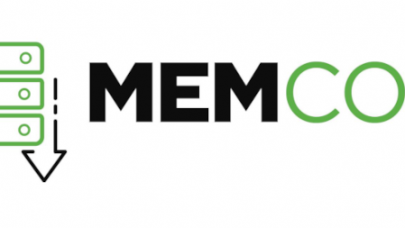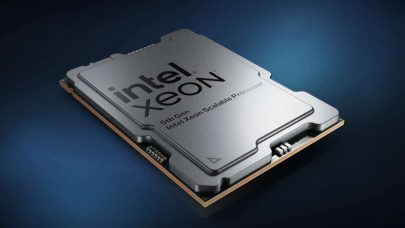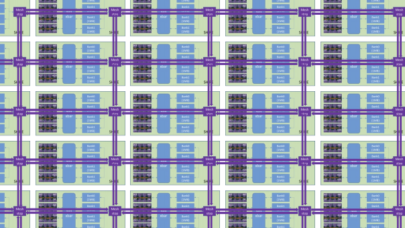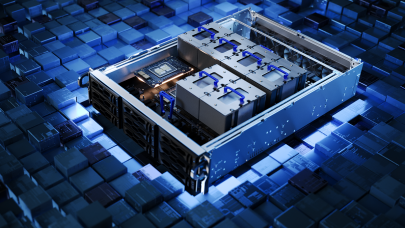
MEMCON 2024: Insights into CXL, HBM, GenAI, and More
March 6, 2024
As the world focuses on GenAI, there is still plenty of other computing going on worldwide. A common denominator is the expanding role of memory technology in G Read more…

Intel Won’t Have a Xeon Max Chip with New Emerald Rapids CPU
December 14, 2023
As expected, Intel officially announced its 5th generation Xeon server chips codenamed Emerald Rapids at an event in New York City, where the focus was really o Read more…

The Divergent Evolution of the Next Generation Xeon Processor
September 7, 2023
At the recent Hot Chips meeting, Intel revealed technical specifications and features for the next-generation Xeon architecture arriving in 2024. While the next Read more…

GigaIO’s New SuperNODE Takes-off with Record Breaking AMD GPU Performance
August 10, 2023
The HPC users dream is to keep stuffing GPUs into a rack mount box and make everything go faster. Some servers offer up to eight GPUs, but the standard server u Read more…

RISC-V Moving Toward Open Server Specification
July 24, 2023
A specification that could standardize the development of RISC-V server chips and systems is currently being drafted by RISC-V International, an organization th Read more…

Intel Admits GPU Mistakes, Reveals New Supercomputing Chip Roadmap
May 22, 2023
Intel has finally provided specific details on wholesale changes it has made to its supercomputing chip roadmap after an abrupt reversal of an ambitious plan to Read more…

CXL Brings Datacenter-sized Computing with 3.0 Standard, Thinks Ahead to 4.0
August 2, 2022
A new version of a standard backed by major cloud providers and chip companies could change the way some of the world's largest datacenters and fastest supercomputers are built. The CXL Consortium on Tuesday announced a new specification called CXL 3.0 – also known as Compute Express Link 3.0... Read more…

UCIe Consortium Incorporates, Nvidia and Alibaba Round Out Board
August 2, 2022
The Universal Chiplet Interconnect Express (UCIe) consortium is moving ahead with its effort to standardize a universal interconnect at the package level. The c Read more…

- Click Here for More Headlines

Whitepaper
Transforming Industrial and Automotive Manufacturing
In this era, expansion in digital infrastructure capacity is inevitable. Parallel to this, climate change consciousness is also rising, making sustainability a mandatory part of the organization’s functioning. As computing workloads such as AI and HPC continue to surge, so does the energy consumption, posing environmental woes. IT departments within organizations have a crucial role in combating this challenge. They can significantly drive sustainable practices by influencing newer technologies and process adoption that aid in mitigating the effects of climate change.
While buying more sustainable IT solutions is an option, partnering with IT solutions providers, such and Lenovo and Intel, who are committed to sustainability and aiding customers in executing sustainability strategies is likely to be more impactful.
Learn how Lenovo and Intel, through their partnership, are strongly positioned to address this need with their innovations driving energy efficiency and environmental stewardship.
Download Now
Sponsored by Lenovo
Whitepaper
How Direct Liquid Cooling Improves Data Center Energy Efficiency
Data centers are experiencing increasing power consumption, space constraints and cooling demands due to the unprecedented computing power required by today’s chips and servers. HVAC cooling systems consume approximately 40% of a data center’s electricity. These systems traditionally use air conditioning, air handling and fans to cool the data center facility and IT equipment, ultimately resulting in high energy consumption and high carbon emissions. Data centers are moving to direct liquid cooled (DLC) systems to improve cooling efficiency thus lowering their PUE, operating expenses (OPEX) and carbon footprint.
This paper describes how CoolIT Systems (CoolIT) meets the need for improved energy efficiency in data centers and includes case studies that show how CoolIT’s DLC solutions improve energy efficiency, increase rack density, lower OPEX, and enable sustainability programs. CoolIT is the global market and innovation leader in scalable DLC solutions for the world’s most demanding computing environments. CoolIT’s end-to-end solutions meet the rising demand in cooling and the rising demand for energy efficiency.
Download Now
Sponsored by CoolIT
Advanced Scale Career Development & Workforce Enhancement Center
Featured Advanced Scale Jobs:
HPCwire Resource Library
HPCwire Product Showcase
© 2024 HPCwire. All Rights Reserved. A Tabor Communications Publication
HPCwire is a registered trademark of Tabor Communications, Inc. Use of this site is governed by our Terms of Use and Privacy Policy.
Reproduction in whole or in part in any form or medium without express written permission of Tabor Communications, Inc. is prohibited.
























